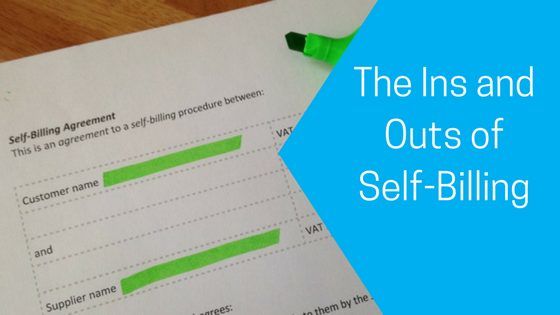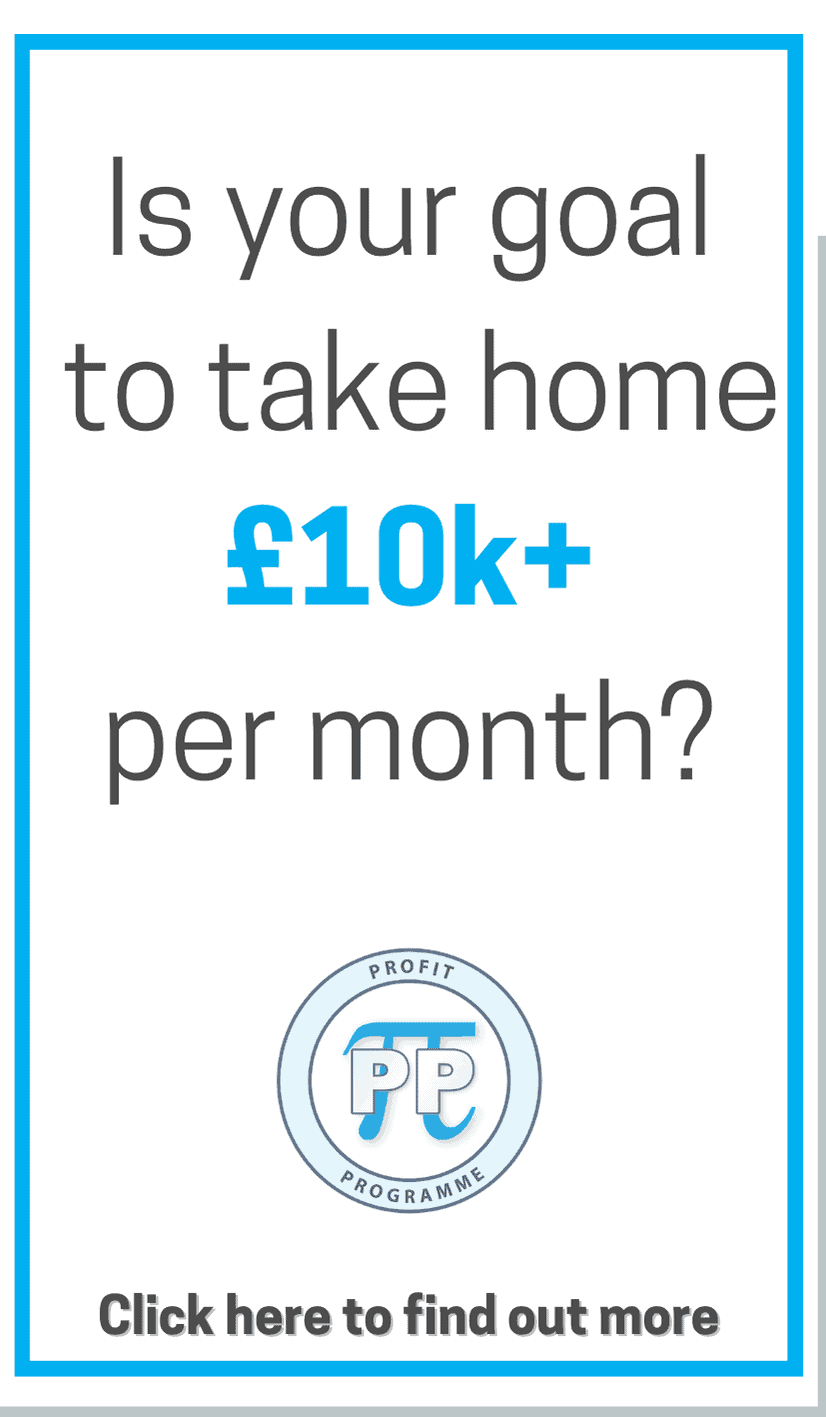Updated 23/03/2017
Sometimes it would be much faster and more efficient if you were to enter your suppliers’ invoices on your accounting system and send them a copy of their invoice afterwards! Well, you can do that if you have a self-billing arrangement with your suppliers.
“Self–billing is a commercial arrangement between a supplier and a customer in which the customer prepares the supplier’s invoice and forwards a copy to the supplier with the payment. You may only issue self–billed invoices to your suppliers if: they have agreed to this method of accounting?” HMRC VAT notice 700/62
What is self-billing?
Usually it’s the supplier who issues the VAT invoice, but in some circumstances the customer prepares the invoice instead and gives the supplier a copy. This system is called self-billing. Any business can use this procedure, so long as certain conditions are met.
Why use self-billing?
There are several scenarios where it may be helpful to enter into a self-bill arrangement with a supplier:
- Efficiency – it may make invoicing easier if the customer (rather than the supplier) determines the value of purchases after the goods have been delivered or the services supplied. Say, for example; a supplier is being paid on a commission basis – commissions will usually be calculated and worked out by the customer, not the supplier. The customer simplifies the process by supplying a self-bill invoice to the supplier along with payment.
- Consistency – accounting staff will be working with uniform purchase documentation. If multiple suppliers are providing similar services at a rate determined by the customer, it might be more efficient for the customer to produce the self-bill invoices for the suppliers ensuring that all the details needed by the customer are already recorded on the invoice.
- Accountability – if you have a supplier who is very good at doing the work for you, but not so good at billing you – you may choose the self-billing route. If your suppliers are sole traders or contractors who are not diligent art raising their own invoices or who are not accustomed to raising regular invoices, you might agree to do this job for them. Self-billing by agreement gives the contractor the paperwork they need for their own accounts without you having to chase for it.
How to start using self-billing?
There’s no requirement to obtain the VATman’s prior approval. Any business can use self-billing provided the arrangements meet the legal conditions. A self-billing agreement will usually last for twelve months. After that you’ll need to review the agreement so that you can provide HMRC with evidence to show that your supplier has agreed to accept the invoices raised on your behalf.
However, if there is a business contract with the supplier, you may not need to make a separate self-billing agreement. In these circumstances, the self-billing agreement would last until the end date of the contract; no review would be needed until the contract had expired.
Before you start self-billing, consider the following:
- you can only recover the VAT shown on self-billed invoices raised to VAT registered suppliers if you meet the conditions listed in VAT Notice 700/62 (see below);
- you may find it difficult to set up self-billing arrangements with your suppliers, or burdensome to maintain them;
- you will be responsible for ensuring that the self-billed invoices you raise carry the correct VAT liability for the goods or services supplied;
- and if you’re raising electronic self-billed invoices to large numbers of suppliers, you will need to ensure that your accounting system is robust and accurate enough to handle the demands placed on it.
Conditions of VAT Notice 700/62 in relation to VAT registered suppliers
All of the following conditions must be satisfied:
- the invoice is provided under the terms of a prior self–billing agreement between a particular customer and a particular supplier relating to goods or services specified in the agreement;
- the supplier must be a taxable person;
- all transactions between that customer and that supplier must be invoiced using self–billing for the duration of the agreement; and
- the customer must keep an up-to-date record of all suppliers who have agreed to self–billing, to include their names, addresses and VAT registration numbers.
Self billing where the supplier is NOT VAT registered
Whilst HMRC makes no requirement for record keeping where your supplier is not VAT registered, it would be sensible to review such arrangements on an annual basis. In the event that your supplier changes VAT registration status, you may reclaim the input VAT on your purchase.
See also: Self-Billing – Raising self billed non VAT invoices
Each self-billed invoice must:
- be clearly marked with the words “Self billing”; and
- clearly state “The VAT shown is your output tax due to HMRC”.
If any conditions are not met , the invoice is ineffective, which means the customer cannot reclaim the VAT as input tax, and the supplier must prepare a separate invoice.
How does it work?
You must raise self-billed invoices for all transactions with the supplier named on the document for a period of up to twelve months (or the duration of the contract). You’ll need to complete self-billed documents showing the supplier’s name, address and VAT registration number, together with all the other details that make up a full VAT invoice. Remember to keep all these details and be able to produce them for inspection by the VATman if required.
Tip. You should review these details regularly to be sure you’re only claiming VAT on invoices you’ve issued to suppliers with valid VAT registration numbers. The simplest way of doing this is to keep a list of the suppliers that are self-billed.
Trap. You can’t issue self-billed VAT invoices on behalf of suppliers who are not registered (or who have deregistered) or to a supplier that changes its VAT registration number, until a new self-billing agreement is drawn up.
The agreement
The agreement should include the following terms :
- the supplier agrees to receive self-billed invoices in respect of supplies to the customer;
- the supplier will not raise any invoices for those supplies;
- a start date;
- an expiry date, which may be linked to the end of any contract between the parties; and
- the supplier agrees to notify the customer if the business ceases to be VAT-registered, is transferred, or changes its VAT number.
- The supplier would probably also want to know if a third party is going to prepare the invoices on the customer’s behalf.
At the end of the 12 month agreement
A customer who wishes to continue with self–billing at the end of the agreement period must review the agreement and obtain evidence that the supplier has agreed to continue with self-billing for a further specified period. It is in any case advisable to carry out a review every 12 months, to confirm that the supplier is still VAT-registered and is willing to continue with the self-billing arrangement.
Self-Billing Agreement Proforma
HMRC suggests the following template for a self-billing agreement.
| Self–Billing Agreement
This is an agreement to a self–billing procedure between:
The self-biller (the customer) agrees: 1. to issue self-billed invoices for all supplies made to them by the self-billee (the supplier) until [date] 1 ;
2. to complete self-billed invoices showing the supplier’s name, address and VAT registration number, together with all the other details which constitute a full VAT invoice;
3. to make a new self–billing agreement in the event that their VAT registration number changes;
4. to inform the supplier if the issue of self-biller invoices will be outsourced to a third party.
The self-billee (the supplier) agrees: 1. to accept invoices raised by the self-biller on their behalf until [date] 1 ;
2. not to raise sales invoices for the transactions covered by the agreement;
3. to notify the customer immediately if they: – change their VAT registration number;
– cease to be VAT-registered; or
– sell their business or part of their business.
|
||||||||||||||||||||||||
Accounting for VAT
The supplier accounts for output tax in the VAT period in which the tax point falls. It is possible for the tax point to fall before the supplier receives either the invoice or payment.
Tip. If the supplier sends an invoice despite the self–billing arrangement, the customer can only reclaim input tax on the self-billed invoice.Trap. If the VAT on a self-billed invoice is understated , HMRC may recover this from the customer instead of the supplier, by issuing a notice to both the customer and the supplier. This is to serve as a deterrent, and is only used in practice when the customer is unable to reclaim the VAT which has been undercharged.Tip. To adjust the value of a supply, the customer must issue a debit note to the supplier, as the value of any subsequent self-billed invoice cannot be amended by the customer.
Cross-border transactions
If the supplier is located outside the UK, the invoice contents must accord with the local rules of the supplier’s country. If using electronic delivery, the customer must check that the chosen method is permissible locally. For an EU supplier supplying goods to the UK, the time of the customer’s acquisition may be determined by the invoice date.
Where a non-UK customer prepares the invoice for a UK supplier, zero-rating in respect of goods will only apply where all of the relevant conditions are satisfied, whether as an EU despatch or export. The invoice must meet the usual UK requirements.





